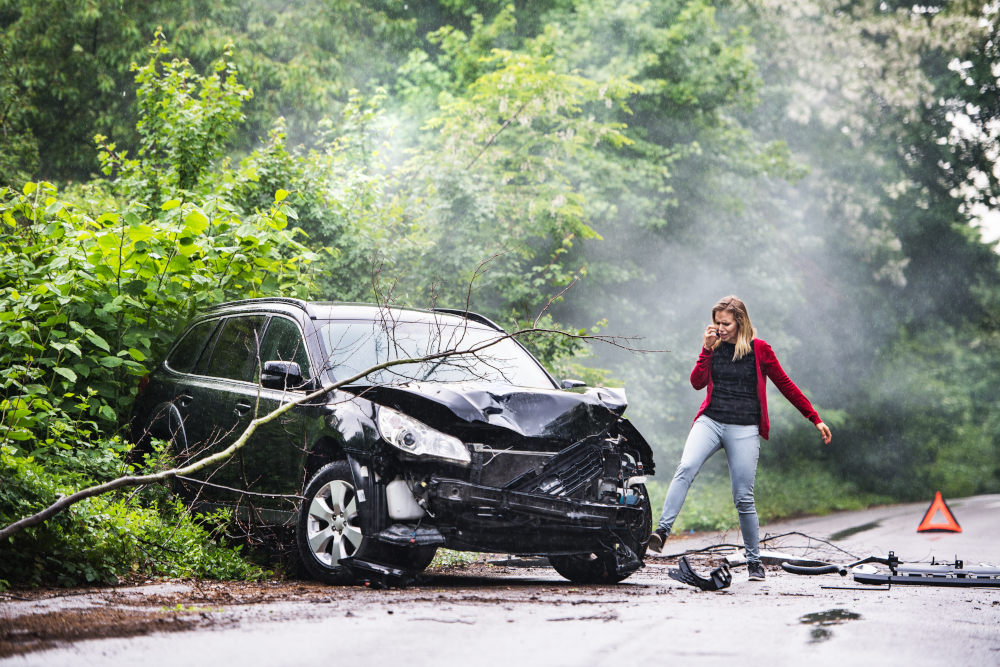Summary
This article delves into the intricacies of utilizing the location of damage as evidence in car accident cases. It offers legal insights and strategies for determining fault. From analyzing frontal damage to leveraging eyewitness accounts, this comprehensive guide empowers lawyers and other professionals. Thus, allowing them to build compelling cases by strategically incorporating the physical evidence of damage location. Additionally, the role of technologies like dashcams, security, and video footage is explored, providing a modern perspective on gathering crucial evidence in car accident litigation.

Rick August, PhD
Working as as Expert Witness, Dr. August provides testimony in crash analysis, traffic safety, road user behavior, and driver education. His expertise is in commercial vehicles (trucks & buses), duty of care, and air brakes.
Introduction
Collisions are unfortunate events that can lead to complex litigation. These legal disputes often hinge on the determination of who caused the collision. In this challenging landscape, legal professionals can gain a significant advantage by strategically utilizing the location of damage on the vehicles involved. This article aims to provide lawyers with valuable insights and strategies to navigate car accident cases effectively, with a particular focus on how the location of damage can be a powerful tool in building a compelling case.
Understanding the Significance
The location of damage on vehicles post-crash can provide insights into the dynamics of the collision. Lawyers can leverage this information to construct a narrative that supports their client’s position regarding fault.
Key areas of consideration in a car accident include:
Frontal Damage
- Frontal damage often indicates potential fault on the part of the driver.
- And damage to the corners of the vehicle indicates a vehicle turning or changing directions. In intersections and parking lots this may indicate failure to observe and communicate with other drivers and road users.
- Legal strategies may highlight the failure to maintain a safe following distance or appropriately respond to changing road conditions.
- To often, damage to the front of the vehicle suggest either lack of spatial awareness or failure to have proper situational awareness or refusal to yield to other traffic.
- In some instances, drivers may have aggressively corrected to avoid a sideswipe crash, lost control, and slammed into another vehicle or fixed object head on.
The location of damage on vehicles post-crash can provide insights into the events leading up to the collision, and in the determination of fault.
Rear-End Collisions
- If reversing, the driver may be at fault owing to poor observation or poor spatial judgement (knowing where their vehicle is in relation to other road users or fixed objects).
- Unless reversing, responsibility in rear-end collisions typically falls on the driver who struck the other vehicle from behind.
- Lawyers can emphasize the negligence of the rear driver, reinforcing arguments related to maintaining a safe following distance, situational awareness, and failing to give right-of-way.
Side-Impact Damage
- Side-impact collisions may occur at intersections or when a driver fails to yield the right of way.
- Legal professionals can leverage this data to establish fault by demonstrating traffic law violations or failure to adhere to road markings, traffic signs, and/or signals.
- Side impact damage can also occur when the driver moves to avoid another vehicle and side swipes vehicle(s) in the adjacent lane.
Strategies for Legal Professionals
Legal professionals have several strategies at their disposal. Best practices would have professionals working from the general to the specifics. In other words, start with the reports and accounts of the involved or injured parties. Little doubt, these will have differences, omissions or details that do not match or line up. Create a list of questions. Accident reconstruction experts, any video, and witnesses can begin to provide answers to the questions, and allow you to construct a legal argument and determination of fault.
Accident Reconstruction Experts
- Engaging accident reconstruction professionals is a pivotal step in analyzing damage and creating a detailed events and time frames that led up to the accident.
- Expert testimony from reconstruction engineers, traffic safety human factors professionals, and other forensic specialists carries substantial weight in court, providing a solid foundation for legal arguments.
Eyewitness Testimony
- Deposing the involved parties can uncover details not yet considered in the investigation.
- Seeking and interviewing eyewitnesses who can provide firsthand accounts of the collision can be invaluable.
- Eyewitness testimonies add credibility to the argument that the location of damage accurately reflects the sequence of events.
Dashcams and Video Footage that Captures Car Accident
- In the era of technology, the role of dashcams and video footage cannot be overstated.
- Encourage clients to use dashcams, and if available, obtain surveillance or bystander video footage to provide a visual representation of the accident.
- Lawyers can use video evidence to bolster their case, offering a clear and objective perspective on the events that precipitated the collision.
Utilizing Technology
- Embrace emerging technologies to streamline the collection and presentation of evidence.
- Utilize software tools that can enhance the analysis of damage location and support legal arguments with data-driven insights.
Conclusion
In the dynamic landscape of car accident litigation, legal professionals must adapt and embrace innovative strategies to determine fault convincingly. Incorporating the location of damage as a pivotal piece of evidence allows lawyers to construct compelling narratives and build strong cases for their clients. Moreover, with the advent of technologies like dashcams and video footage, legal professionals can now augment their evidence and provide a visual representation of the events leading up to the accident.
By strategically utilizing the location of damage and embracing modern tools, attorneys can navigate the complexities of determining fault with confidence. This approach ensures that justice prevails in the aftermath of a car accident, offering clients robust representation and a greater likelihood of successful legal outcomes.

